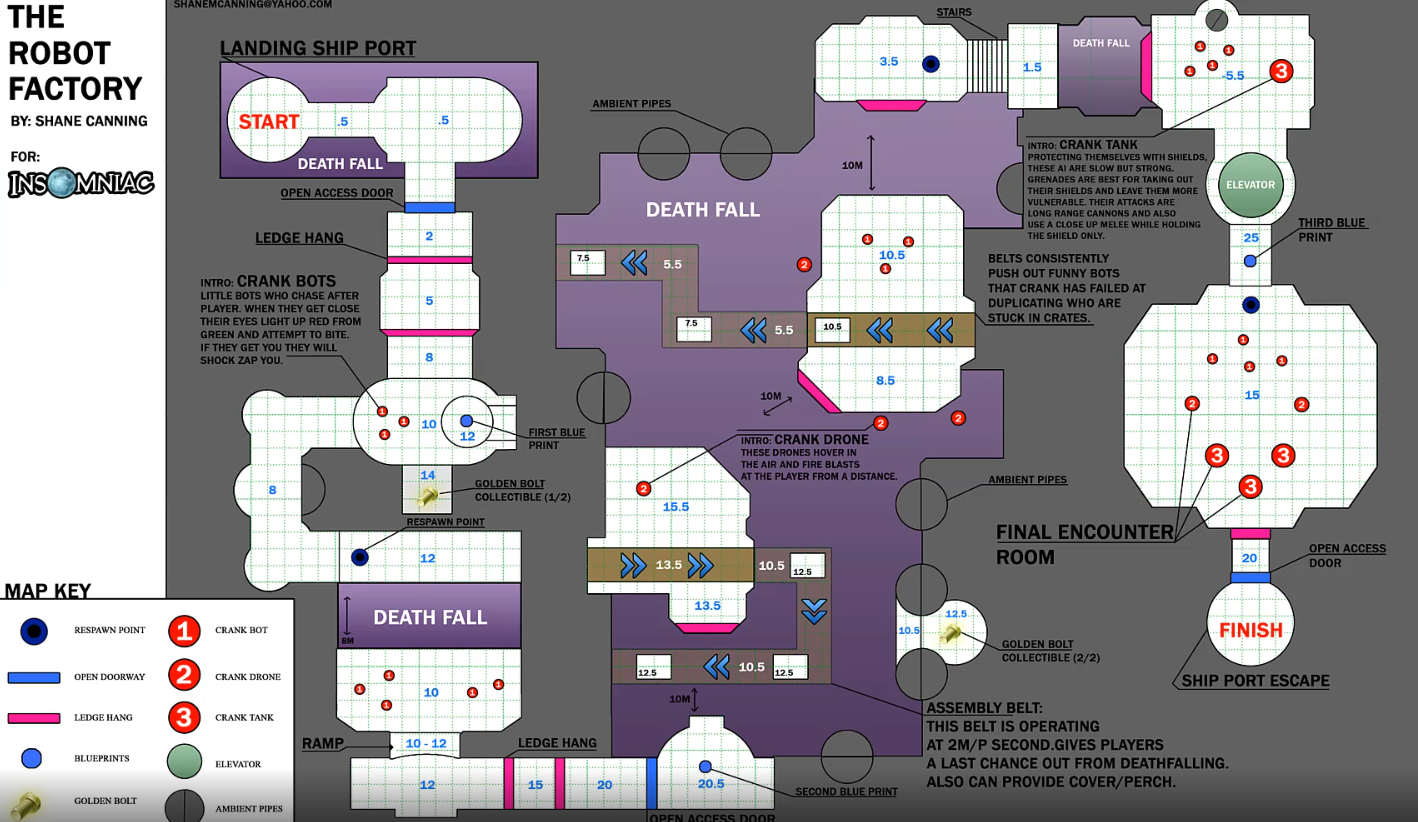Creating your Visual Style
- Make clear where the player can go. You can use a grid to highlight or even color for it:
- Grass with green
- Take colors into the account:
- Indicate goals and treasures for the players
- Make everything relevant for players obvious
“Its up to the designer to define how they want to present their work”
Regulations and Metrics
- Gyms: Test levels where the level designer to show case and investigate what are the mechanics and metrics are
- Examples of gyms: Combat, Foot IK (to simulate the animations), Mechanics ( Jump distance and height, Climbable Ledges, Crawling)
Planning a Level
-
Level design documentation is visual documentation
-
Get references or generate using AI
-
Analysis of Gameplay beat breakdown and pacing of the level:

-
You can use color to highlight areas of the map on top down block out maps:

-
Use grid and sketch’s to help during the planning using the known metrics:

Useful Tools for Planning
- Bubble / Flow Charts
- Vizio / Whimsical Doc
- 2-D Maps / Sketches
- Pure Ref Board
- Design Document
- Mission Beats
Relatable Game Levels
- “You should took more can than to create a hallway to make the player goes to A to B”
- Always take screenshots from the players perspective
- Abstract geometry can be difficult to understand
- Don’t over use the same material
- “Squint the eyes!” to check how readable
Positive and Negative Space
- Negative: Everything that is not interactable on the stage
Spacing and Comfort
- Its important to create spaces to make the player engage considering the metrics for comfort
- Take note about:
- The camera shouldn’t be bumping or clipping while the player is moving around
- The player shouldn’t be hitting a wall when jumping between platforms
- Consider the space between the walls and the end of staircases
Scale is Key
Object Hierarchy: Hierarchy is a visual design principle which designers use to show the importance of each your scene’s contents by changing these elements. In this case, we mean size or scale - players recognize larger elements more easily.
Find the scale that works for your game and the world and stay consistent
-
We not are always saying that the scale will be the real world scale!!!
- Real World: Accurate proportions / realistic
- Stylized : Super small/big/exaggerations
-
Take a special attention to:
- Collision not matching
- Prop scaling
- Building heights
- Ceiling heights
- Crowded spaces
- Player Metrics
-
Scope is the world size
Do I have enough detail?
- Game’s Complexity
- Team’s preference
- Designer’s choice
- Cohesive LD presentation
“The level block out should accurately represent the mechanics the best you can”
- Don’t forget to challenge players
- Make me pressed buttons
- Add as much detail as you need to sell your level ideas
How to use Reference Material
“Get from photos, images, drawings and organize it”
- There are many specific types of references that a level designer may want to collect, depending on the type of game and environment they are designing
- By collecting and referencing to these types of references, you can create a more detailed, immersive an visual interesting game level space that supports the game’s story and mechanic
- Do not underestimate the planning stages, research and collecting solid reference for your work. It makes a big difference
Week 02 - Assignment
During the week 2 the objective was to make an Ancient Egyptian Tomb. Should be take inspiration on the movie “The Mummy”.
The goals for week 2 are:
- Make your own PureRef Reference Board
- Get more familiar building LINEAR spaces
- Start identifying key shapes
- Imagine a story or gameplay taking place
- Blocking out a simple level to move around in
- Continue getting familiar with Blueprint Character (ALS V4)
Link to original



